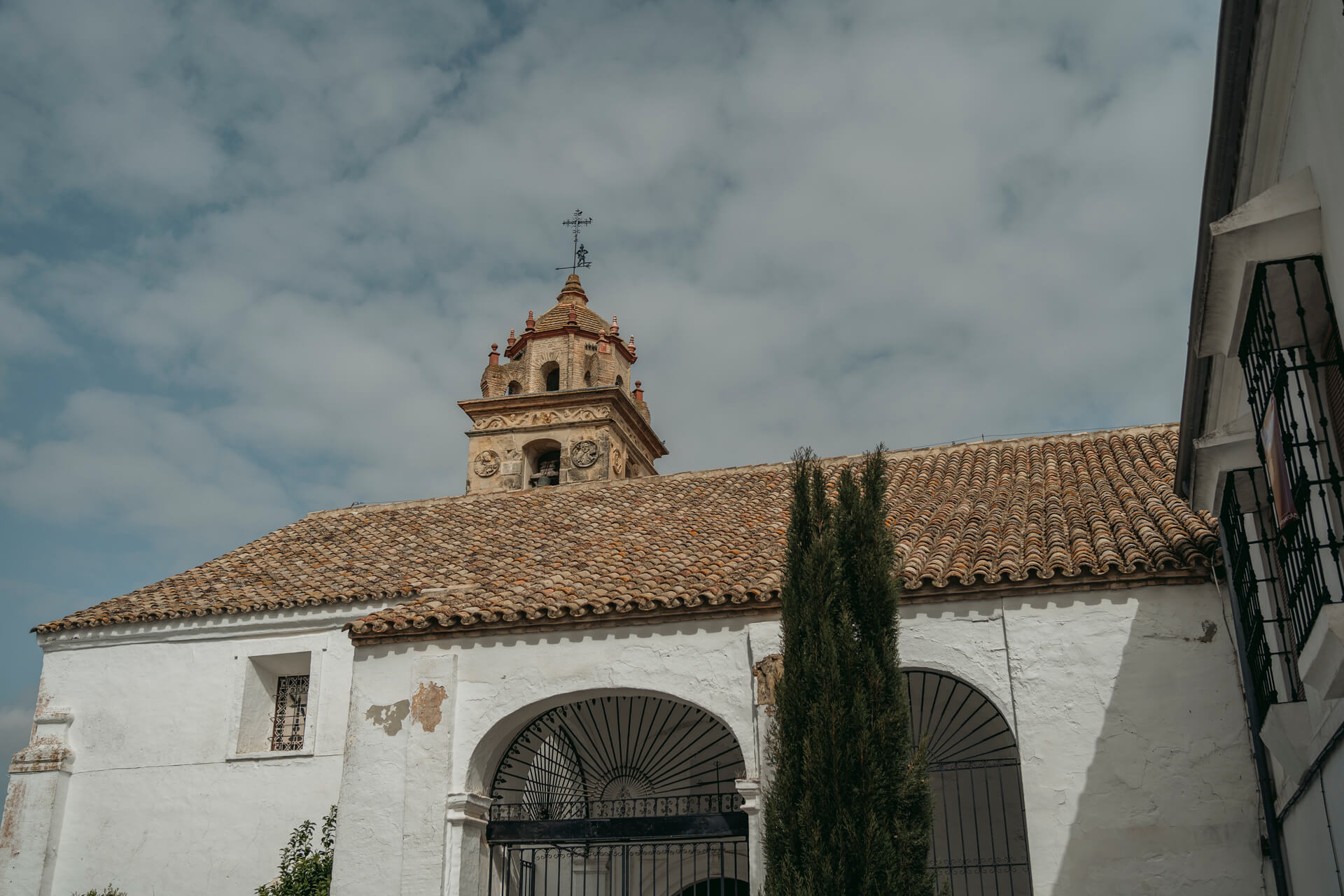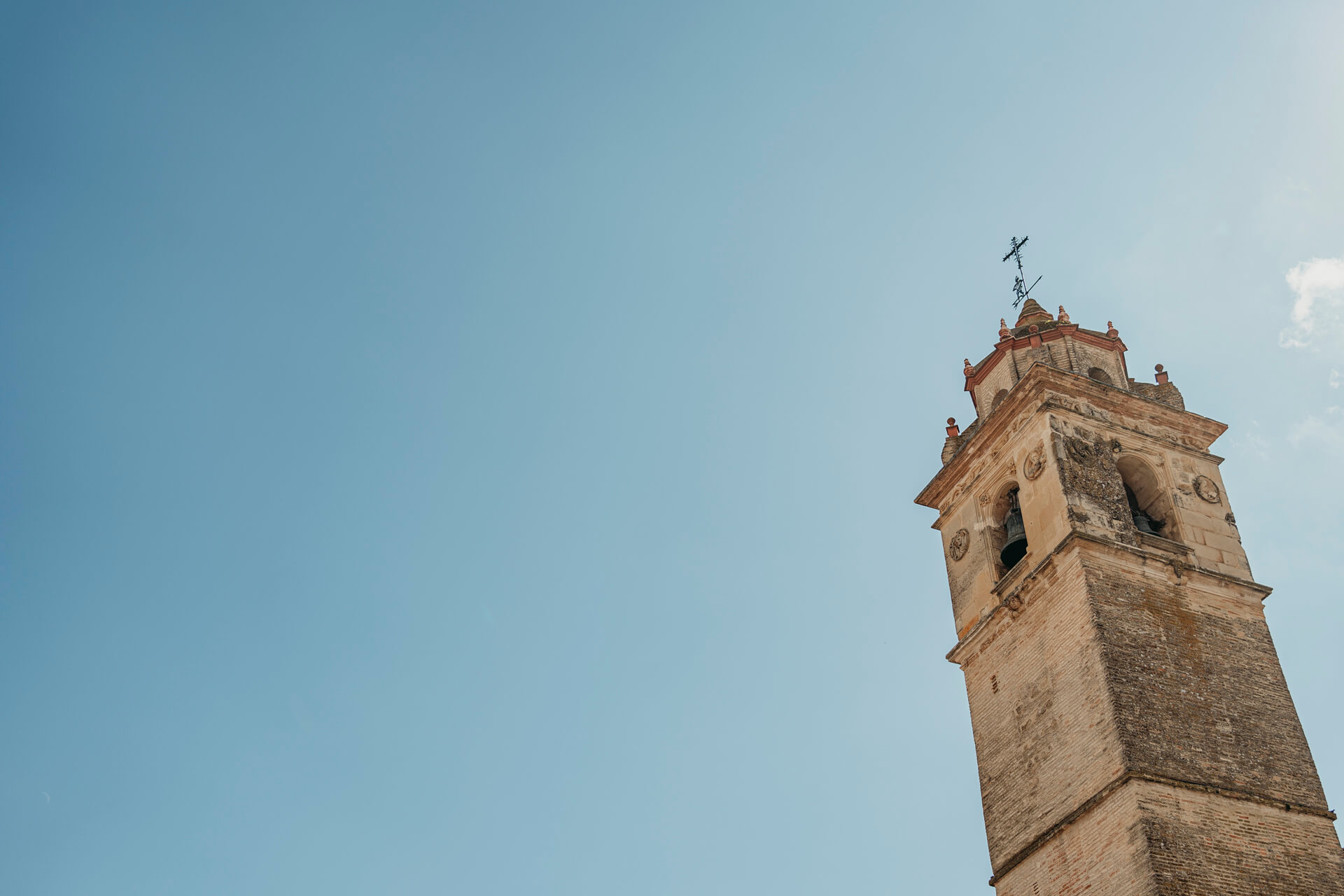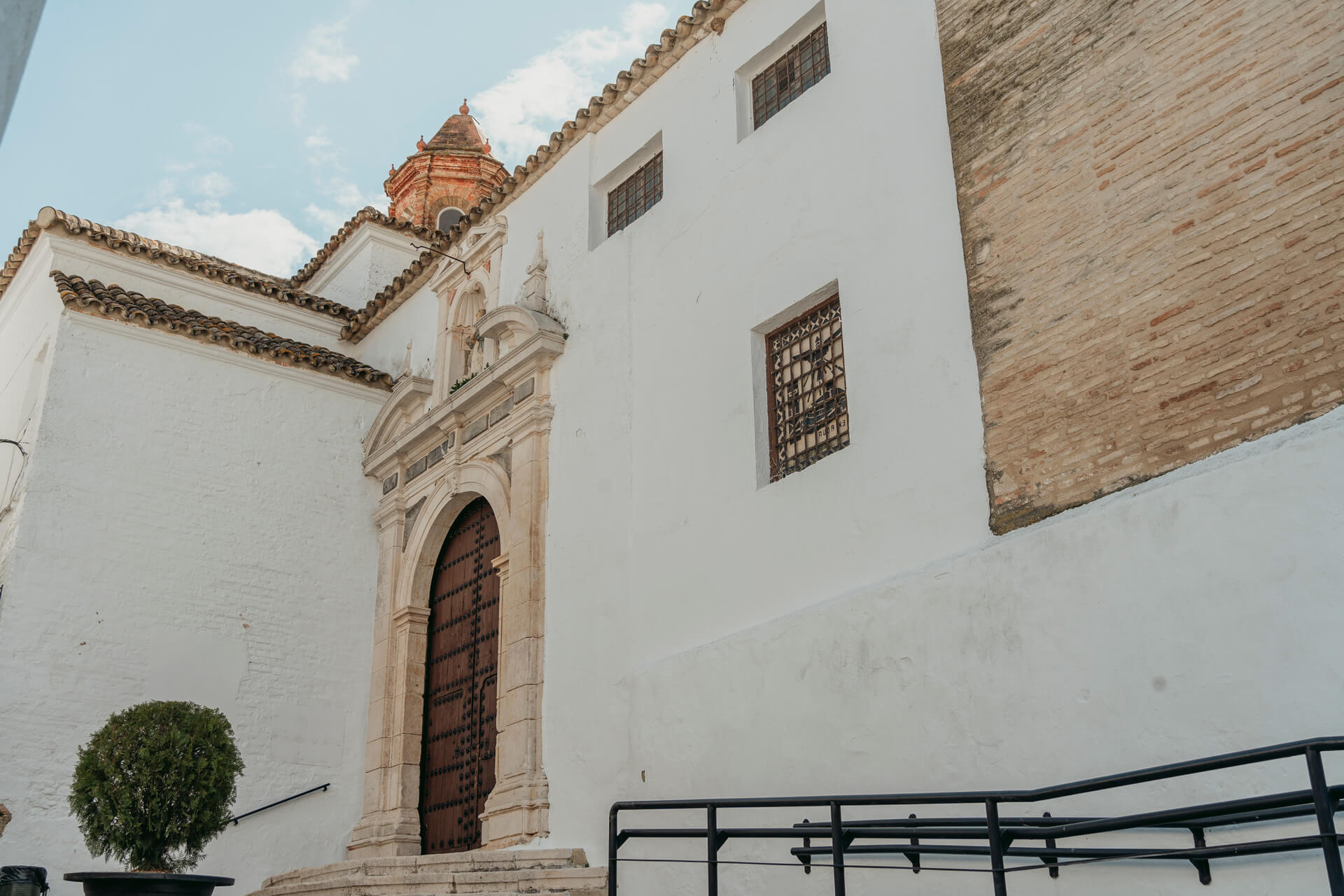NUESTRA SEÑORA DE LA ASUNCIÓN CHURCH
'For the lovers of the Renaissance and Baroque periods, the lush decoration, golden altarpieces and figures with a great artistic quality, this church will delight the most exquisite palates'.




Raised in the 16th Century, during the Renaissance period, the rests of the church show features of Renaissance architecture. It consists of a big temple with three naves, the central one being higher and wider than the side ones. The original centre of the church dates around the 16th Century, in spite of the posterior adding of new churches during the whole 18th Century.
The temple has got two very different façades. On the one hand, the main appears structured over two bodies and crowned by a splitted facade, with an alcove where an image of Immaculate Conception is. The most interesting part of the façade is that it still preserves remains of the original polichromy in the ochre tones that it may have had in the past. On the other hand, the second façade has got a porch in which we can notice a primitive sundial .
The elegance of the tower.
The bell tower of Ntra. Sra. de la Asunción Church rises up proudly in front of Constitution Square. It is architecturally divided in three well differentiated bodies. The first section is confectioned by bricks. The second one has inside the bodies of the bells, being the most interesting one among them due to it is work of the Cordoban architect Hernán Ruiz II, a superb example of Renaissance architecture in Córdoba. The third section, which is the crown, is added during the 18th Century, after the destruction caused by Lisbon’s earthquake in 1755.. At the top we can find tondos (circular sculptures) decorated with rinceaux that represent Apostles (Andrew the Apostle, Bartholomew the Apostle, etc.).
We move to the inside part.
Inside we can find a structure formed by three naves, the central one being covered by a barrel vault with lunettes, and the side naves, with groin vaults. The crossing is work of Hernán Ruiz II as well. The main altarpiece is a work from the middle part of the 17th Century, his author was Pedro Freire Ladrón de Guevara. As a curiosity, this retable costed the enormous amount of 2.800 ducats. That was a fortune for that period! This is why it is considered the best altarpiece from that period in the whole province.
It has got a classic structure divided in pew, two bodies and an attic. It has got different sculptures, among them we must highlight Saint Peter the Apostle and Paul the Apostle, Saint Michael and the Guardian angel. Next to the Sanctum, the prophets Habakkuk and Isaiah appear.
It must be standed out by the bas-reliefs on the bases that represent with high artistic quality scenes from the Passion of Jesus: the Agony in the Garden and the Last Supper. On the central alcove we find the figure of Acathius of Melitene (a modern sculpture compared to the previous, which was destroyed during the Spanish Civil War), he is Montemayor’s patron saint. He is represented as a soldier using an armour from the 16th Century, whose silver spear appears signed by the famous silversmith Damián de Castro.
On the centre of the superior body appears the main work of the church: Assumption of Mary (which represents the moment when Virgin Mary is elevated to the sky by angels). She appears guarded on each of her sides, by Córdoba’s saint patrons: Saint Acisclus and Saint Victoria. On the curved superior cornices the sculptures of Faith and Hope appear. The whole group appear crowned by the figure of God the Father.
Take a good look around you.
Did you know that the Renaissance meant the rediscover of classic art, above all, the Roman, due to a lot of architects, painters and sculptors used to travel to Italy in order to firsthand study and know more it. This rebirth of traditional art made some architects to use remains of other old constructions in the new buildings that were being built.
In this church the huge Roman columns that separate the naves, even some of them being incomplete. Their material is from the Roma period. On the base of the church’s tower, the architect used Roman millstones that were also used to its construction.
Do not leave without seeing.
Duques de Frías’ chapel is a true gem inside the church. It can be found on the left side of the crossing and it was realized by Gaspar Lorenzo de los Cobos around 1730. The altarpiece is a Baroque work formed by a small bench, and only a body consinsting on a flared alcove, flanked by two pilasters and completed by Ducal de Frías’ Badge.
On the wooden altarpiece there are two exceptional works of art. On the one hand, the sculpture of Virgen de Gracia, a polychromatic porcelain figure brought from Italy during the 18th Century by Duques de Frías. The Rococo aesthetics is shown both in the elegance and fineness of the Virgin, and even on the complex clothing in blue and pink colours with golden touchs of the figure, that appears standing on a cherubs base. On the other hand, the oil painting that crowns the combination of the Virgin with her child, which is a copy of the flamenco work of the 16th Century, preserved inside Ducal Castle.
The golden altarpiece appears wrapped in a plaster structure with Rococo aesthetics, decorated with vegetable motif, rinceaus, angels, etc. On the lateral streets of the altarpiece there are some paintings: Benedict of Nursia and Bernard of Clairvaux (lower part) Saint Jerome and Saint Francis of Assisi (top part of the altarpiece). Even though they are not signed, due to its style they could belong to Leonardo Enríques de Navarra.
Chapel of the Immaculate Conception
On the sides of the Gospel we can fin the Chapel of the Immaculate Conception, built by Osorio lords, administrators of duchesses of Frías. It is considered one of the most beautiful chapels of the temple. It has got a square floor, presided over by an altarpiece from the 18th Century, whose pilasters are decorated by angels that bring symbols of Marianism litany (the moon, the sun, the stairway, the mirror, the tower, etc.). The figure of the Immaculate has a huge artistic quality, being attributed to Bernardo de Mora (1698).
On the inside part of the chapel can be found the Museum of Silver, which shows an excellent silversmithing collection. It deals with an abundant liturgical trousseau made up of pieces with an outstanding quality, including two parish crosses from the 17th Century, as well as several pieces by the renowned Cordoban goldsmith Damián de Castro, they are dated from between 1769 and 1777.
The most important place in the church: the Sanctuary chapel.
Located in the right nave we find the Sanctuary chapel, one of the many chapels that were built in the 18th Century. It was Gaspar Lorenzo de los Cobos who designed the traces of the chapel, such as the plasterwork and the altarpiece that decorate it. The plasterwork makes up a decoration such as Exaltation to the Eucharist.
The chapel is presided over by an altarpiece divided in two bodies, structured by Solomonic columns (the lower one) and by means of a small temple (the upper one). There are different works that we find in this exquisitely made altarpiece: a Crucified from the17th Century, several canvases from the middle part of the 18th Century, that represent the Archangels, the Guardian Angel, Saint Jude and the imposition of the chasuble to Saint Ildefonso.
In the first section of the Tabernacle stands the Chapel of Virgen del Rosario. Like the entire Sagrario complex, it is the work of Gaspar Lorenzo de los Cobos, being one of the best works of his artistic career. Virgin of the Rosary appears floating on a pedestal of clouds with cherubs. In her left hand, she holds the Child Jesus and in her right one, she is holding a rosary.
Wood transformed into Art.
In the Parish of Our Lady of the Assumption there are two examples of true wooden works of art: the choir stalls and the church’s organ. The stalls are located at the foot of the church and are made of walnut wood. It consists of 15 seats with decorated backs, being dated to the second half of the 18th Century.
The organ was made around 1727. It is elevated and appears divided into two clearly differentiated bodies, the lower one, dedicated to the keyboard and the second body houses, that contain the organ pipes. The set appears decorated in gold and green tones on a red background.



